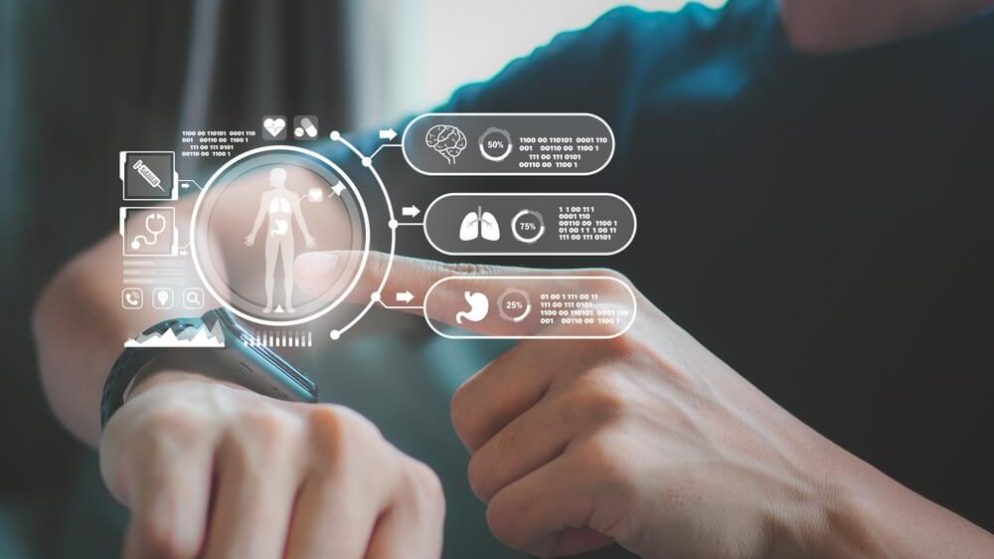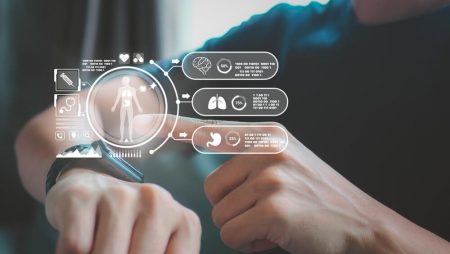



Get new exclusive access to healthcare business reports & breaking news




The digital takeover of the healthcare industry has put health management literally into the palms of people’s hands. Whether with smartphone health applications or wearable devices, people are tracking their health in ways they never have before.
40% of U.S. adults said they use health applications, and another 35% use wearables, both up from late-2018 surveys. Health apps use has gone up by 6 percentage points din December 2018. When it comes to the devices themselves, wearables usage has grown by 8 points, according to a new Morning Consult survey. The main reason people would use a health app is during exercise or for heart rate monitoring, while cost was the main reason some people did not use them, even though they found such a behavior useful.
Digital health has developed from a step-counting tool to technology that can help keep chronic diseases in check and warn people of irregular heartbeats. What may have once been seen as a fad or an attempt by tech giants like Alphabet Inc.’s Google and Apple Inc. to gain influence in a lucrative industry has become a larger piece of patients’ and providers’ approach to treatment — and it’s an approach that the public appears increasingly comfortable with, Morning Consult data indicates.
There are many different ways we can now use technology to measure different indicators in order to preserve or improve our health.
Pedometers are defined as tech devices, wearables or apps that help clock your steps as you train, exercise or go about your day to day activities. These nifty health tech gizmos can truly help you stay fit and transform your health and well-being.
A good heart monitor helps consumers track their physical exercise and training intensity, becoming a reliable workout companion.
Heart monitors have greatly evolved from the heavy, klutzy and uncomfortably cold devices that you’d have to strap to your chest. Today, they are stylish, small, packed with cutting-edge features, and can do much more than monitor your heart rate.
Like most modern fitness trackers, these handy health tech gadgets allow you to acquire useful knowledge about how your heart works. Most of them record your heart data, which than is easily shared with your doctor, nutritionist or sports instructor.
Like with any piece of technology, choosing the right fit for you might become a burden. Heart monitors on the market today come in all types, sizes, models, styles, and price tags, and they even have scores from consumer feedback. In order to help you make the right choice for you, we put together this comprehensive guide to help you choose the right heart monitor for your health and fitness needs.
Fitbit, the leading global wearables brand, has been working for years to develop technology that can read sleep patterns and understand their impact on customers’ health.
The Fitbit database has led to some interesting discoveries that could prompt customers to change their sleep behaviors for the better and improve sleep quality. One valuable finding? One in four people try to make up for the lack of sleep during the week by getting more shut-eye on weekends. In the long term, this strategy can have serious health consequences. The new Fitbit Charge 3 is part of Fitbit’s bigger goal of developing FDA-regulated software for sleep and heart conditions.
For most of us, having to wait six months to a year to get a blood pressure (BP) reading at the physician’s office is far too long. That is where home blood pressure monitoring (HBPM) comes into play; it’s an increasingly vital practice in which patients take their own blood pressure readings, either to help in managing high blood pressure after it’s diagnosed or to detect whether the chronic condition is present.
HBPM is an all-important segment of the larger at-home heart health industry that has burgeoned in the past few years, partly thanks to the availability of easy-to-use, fairly inexpensive digital blood pressure devices. The accuracy of these BP monitors has also improved dramatically, making BP at-home monitors reliable and a great tool for your healthcare.
The latest data shows that many more people use health wearables and health apps than five years ago, the up trend being easy to spot.
Two in 5 U.S. adults now use health apps, an increase of 6 percentage points since late 2018, and the share of Americans who said they use wearables is up to 35%, an 8-point jump over the same period, according to Morning Consult data.
“The last five years have been very exciting. I think the next five years is going to be potentially even more exciting and transformative as innovation continues to evolve in almost every area of health care,” Scott Whitaker, chief executive of the medical device industry group AdvaMed, said of wearables and data collected by trackers. The combination of consumers’ fascination with the technology and users’ recognition of the added value is “driving up the usage tremendously,” he added.
While usage of apps and wearables has climbed over the past four years, there is still room to grow, as the majority of adults said they do not use the technologies. However, the new survey reflects Whitaker’s sentiment on consumer fascination: at least half of those who use health apps and wearables said they use the technologies at least once a day.
The digital takeover of the healthcare industry has put health management literally into the palms of people’s hands. Whether with smartphone health applications or wearable devices, people are tracking their health in ways they never have before.
40% of U.S. adults said they use health applications, and another 35% use wearables, both up from late-2018 surveys. Health apps use has gone up by 6 percentage points din December 2018. When it comes to the devices themselves, wearables usage has grown by 8 points, according to a new Morning Consult survey. The main reason people would use a health app is during exercise or for heart rate monitoring, while cost was the main reason some people did not use them, even though they found such a behavior useful.
Digital health has developed from a step-counting tool to technology that can help keep chronic diseases in check and warn people of irregular heartbeats. What may have once been seen as a fad or an attempt by tech giants like Alphabet Inc.’s Google and Apple Inc. to gain influence in a lucrative industry has become a larger piece of patients’ and providers’ approach to treatment — and it’s an approach that the public appears increasingly comfortable with, Morning Consult data indicates.
There are many different ways we can now use technology to measure different indicators in order to preserve or improve our health.
Pedometers are defined as tech devices, wearables or apps that help clock your steps as you train, exercise or go about your day to day activities. These nifty health tech gizmos can truly help you stay fit and transform your health and well-being.
A good heart monitor helps consumers track their physical exercise and training intensity, becoming a reliable workout companion.
Heart monitors have greatly evolved from the heavy, klutzy and uncomfortably cold devices that you’d have to strap to your chest. Today, they are stylish, small, packed with cutting-edge features, and can do much more than monitor your heart rate.
Like most modern fitness trackers, these handy health tech gadgets allow you to acquire useful knowledge about how your heart works. Most of them record your heart data, which than is easily shared with your doctor, nutritionist or sports instructor.
Like with any piece of technology, choosing the right fit for you might become a burden. Heart monitors on the market today come in all types, sizes, models, styles, and price tags, and they even have scores from consumer feedback. In order to help you make the right choice for you, we put together this comprehensive guide to help you choose the right heart monitor for your health and fitness needs.
Fitbit, the leading global wearables brand, has been working for years to develop technology that can read sleep patterns and understand their impact on customers’ health.
The Fitbit database has led to some interesting discoveries that could prompt customers to change their sleep behaviors for the better and improve sleep quality. One valuable finding? One in four people try to make up for the lack of sleep during the week by getting more shut-eye on weekends. In the long term, this strategy can have serious health consequences. The new Fitbit Charge 3 is part of Fitbit’s bigger goal of developing FDA-regulated software for sleep and heart conditions.
For most of us, having to wait six months to a year to get a blood pressure (BP) reading at the physician’s office is far too long. That is where home blood pressure monitoring (HBPM) comes into play; it’s an increasingly vital practice in which patients take their own blood pressure readings, either to help in managing high blood pressure after it’s diagnosed or to detect whether the chronic condition is present.
HBPM is an all-important segment of the larger at-home heart health industry that has burgeoned in the past few years, partly thanks to the availability of easy-to-use, fairly inexpensive digital blood pressure devices. The accuracy of these BP monitors has also improved dramatically, making BP at-home monitors reliable and a great tool for your healthcare.
The latest data shows that many more people use health wearables and health apps than five years ago, the up trend being easy to spot.
Two in 5 U.S. adults now use health apps, an increase of 6 percentage points since late 2018, and the share of Americans who said they use wearables is up to 35%, an 8-point jump over the same period, according to Morning Consult data.
“The last five years have been very exciting. I think the next five years is going to be potentially even more exciting and transformative as innovation continues to evolve in almost every area of health care,” Scott Whitaker, chief executive of the medical device industry group AdvaMed, said of wearables and data collected by trackers. The combination of consumers’ fascination with the technology and users’ recognition of the added value is “driving up the usage tremendously,” he added.
While usage of apps and wearables has climbed over the past four years, there is still room to grow, as the majority of adults said they do not use the technologies. However, the new survey reflects Whitaker’s sentiment on consumer fascination: at least half of those who use health apps and wearables said they use the technologies at least once a day.